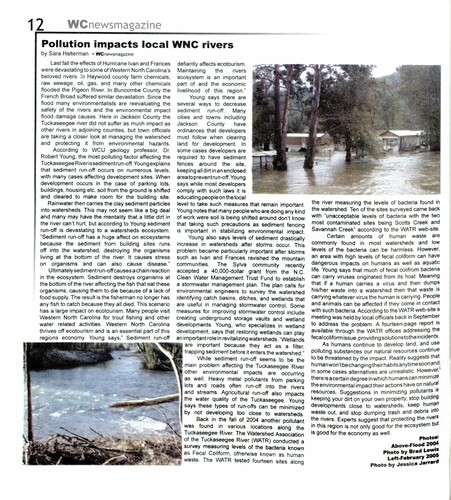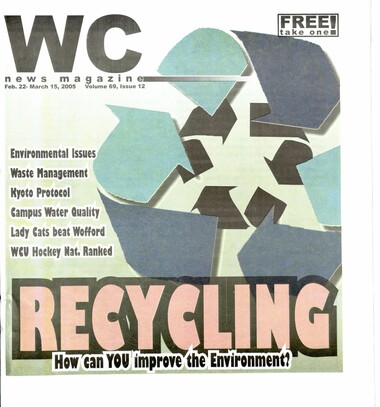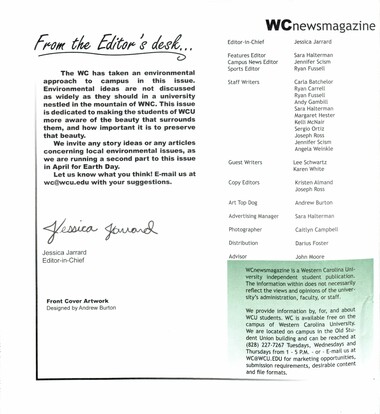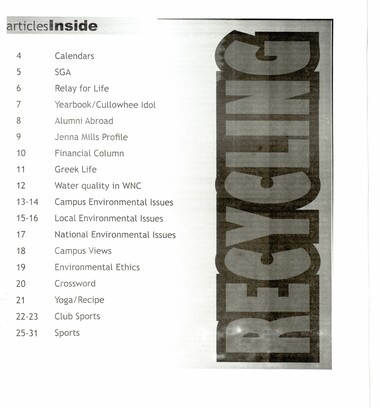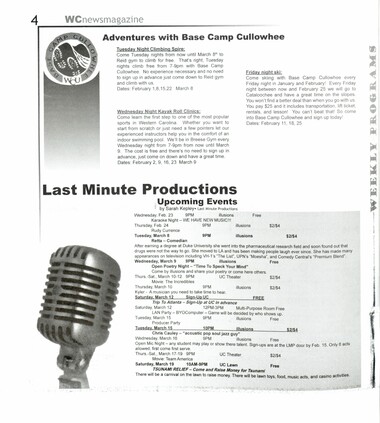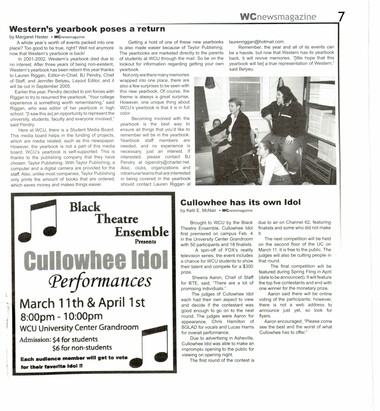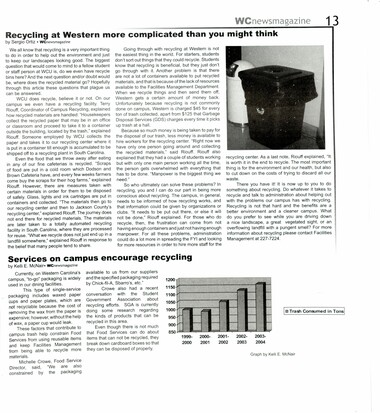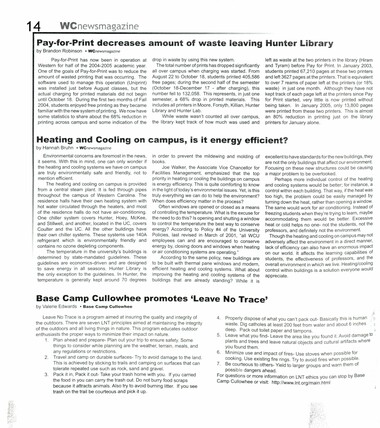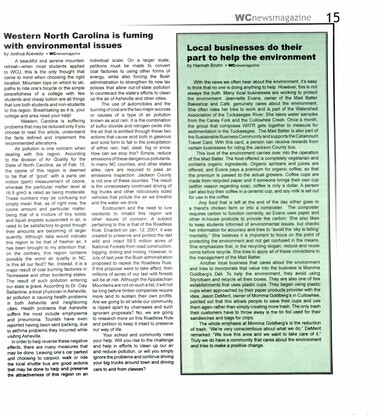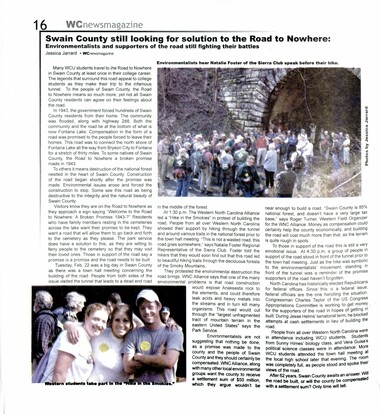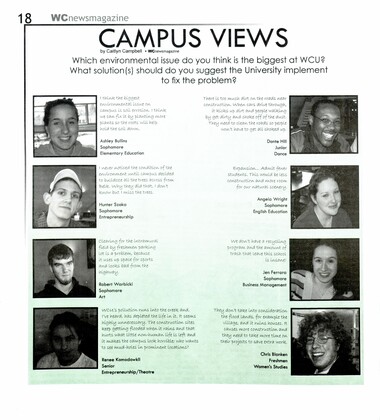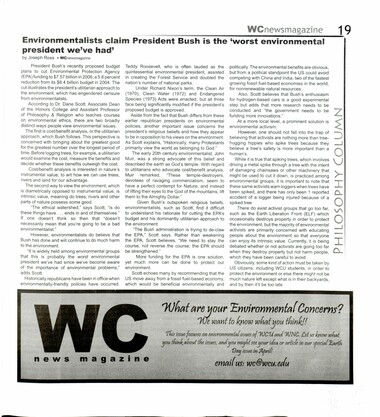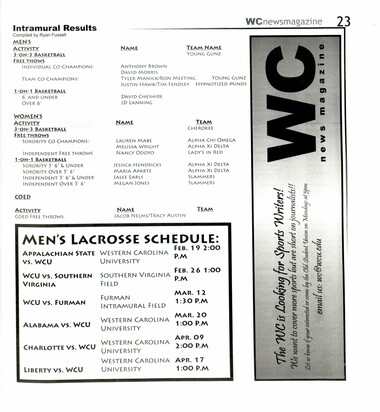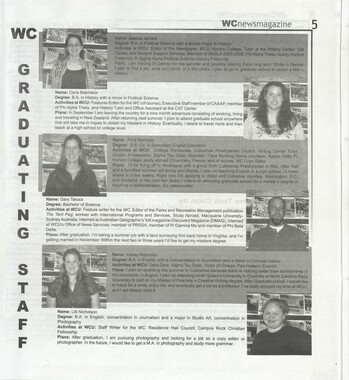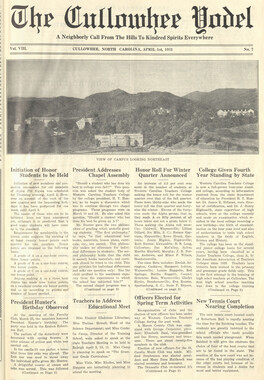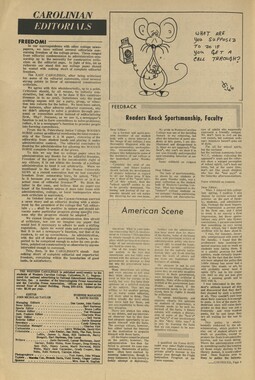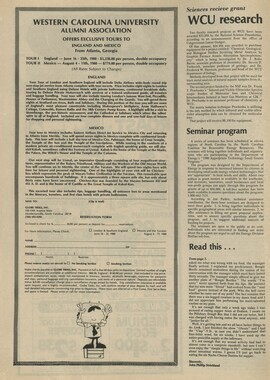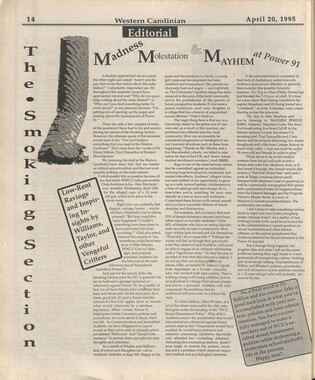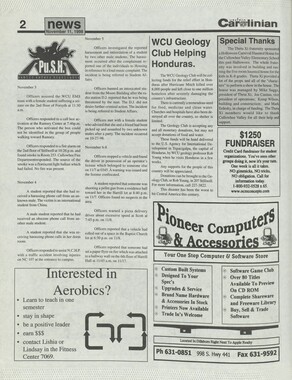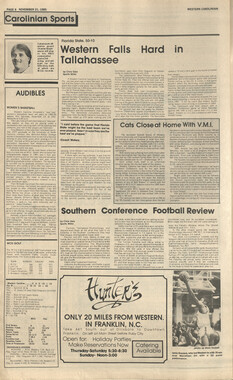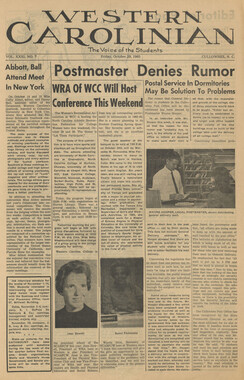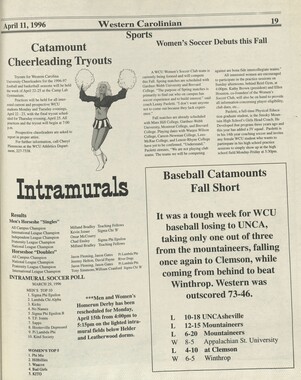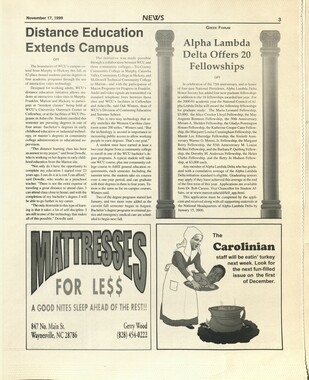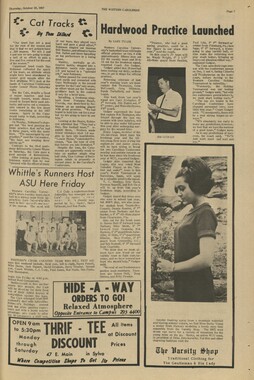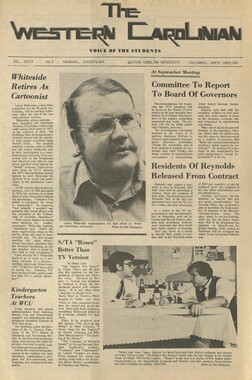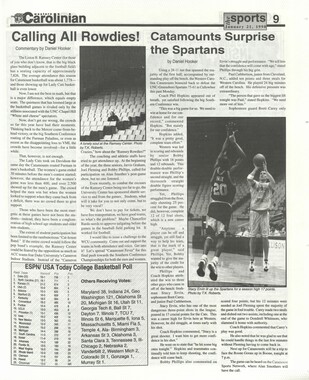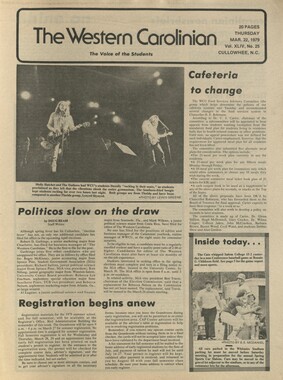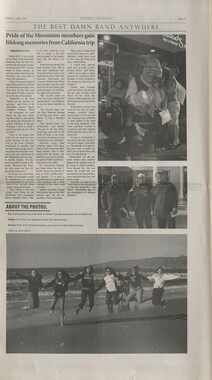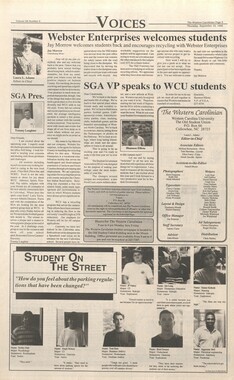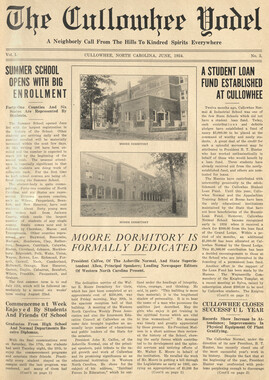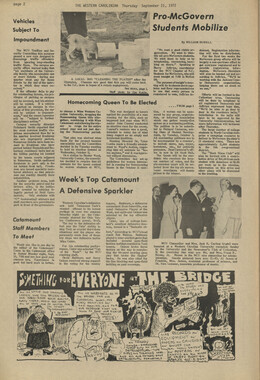Western Carolina University (21)
View all
- Canton Champion Fibre Company (2308)
- Cherokee Traditions (291)
- Civil War in Southern Appalachia (165)
- Craft Revival (1942)
- George Masa Collection (135)
- Great Smoky Mountains - A Park for America (2901)
- Highlights from Western Carolina University (422)
- Horace Kephart (941)
- Journeys Through Jackson (159)
- LGBTQIA+ Archive of Jackson County (85)
- Oral Histories of Western North Carolina (314)
- Picturing Appalachia (6798)
- Stories of Mountain Folk (413)
- Travel Western North Carolina (153)
- Western Carolina University Fine Art Museum Vitreograph Collection (129)
- Western Carolina University Herbarium (92)
- Western Carolina University: Making Memories (738)
- Western Carolina University Publications (2491)
- Western Carolina University Restricted Electronic Theses and Dissertations (146)
- Western North Carolina Regional Maps (71)
- World War II in Southern Appalachia (131)
University of North Carolina Asheville (6)
View all
- Allanstand Cottage Industries (62)
- Appalachian National Park Association (53)
- Bennett, Kelly, 1890-1974 (1463)
- Berry, Walter (76)
- Brasstown Carvers (40)
- Carver, George Washington, 1864?-1943 (26)
- Cathey, Joseph, 1803-1874 (1)
- Champion Fibre Company (233)
- Champion Paper and Fibre Company (297)
- Cherokee Indian Fair Association (16)
- Cherokee Language Program (22)
- Crowe, Amanda (40)
- Edmonston, Thomas Benton, 1842-1907 (7)
- Ensley, A. L. (Abraham Lincoln), 1865-1948 (275)
- Fromer, Irving Rhodes, 1913-1994 (70)
- George Butz (BFS 1907) (46)
- Goodrich, Frances Louisa (120)
- Grant, George Alexander, 1891-1964 (96)
- Heard, Marian Gladys (60)
- Kephart, Calvin, 1883-1969 (15)
- Kephart, Horace, 1862-1931 (313)
- Kephart, Laura, 1862-1954 (39)
- Laney, Gideon Thomas, 1889-1976 (439)
- Masa, George, 1881-1933 (61)
- McElhinney, William Julian, 1896-1953 (44)
- Niggli, Josephina, 1910-1983 (10)
- North Carolina Park Commission (105)
- Osborne, Kezia Stradley (9)
- Owens, Samuel Robert, 1918-1995 (11)
- Penland Weavers and Potters (36)
- Roberts, Vivienne (15)
- Roth, Albert, 1890-1974 (142)
- Schenck, Carl Alwin, 1868-1955 (1)
- Sherrill's Photography Studio (2565)
- Southern Highland Handicraft Guild (127)
- Southern Highlanders, Inc. (71)
- Stalcup, Jesse Bryson (46)
- Stearns, I. K. (213)
- Thompson, James Edward, 1880-1976 (226)
- United States. Indian Arts and Crafts Board (130)
- USFS (683)
- Vance, Zebulon Baird, 1830-1894 (1)
- Weaver, Zebulon, 1872-1948 (58)
- Western Carolina College (230)
- Western Carolina Teachers College (282)
- Western Carolina University (2008)
- Western Carolina University. Mountain Heritage Center (18)
- Whitman, Walt, 1819-1892 (10)
- Wilburn, Hiram Coleman, 1880-1967 (73)
- Williams, Isadora (3)
- Cain, Doreyl Ammons (0)
- Crittenden, Lorraine (0)
- Rhodes, Judy (0)
- Smith, Edward Clark (0)
- Appalachian Region, Southern (2693)
- Asheville (N.C.) (1936)
- Avery County (N.C.) (26)
- Blount County (Tenn.) (195)
- Buncombe County (N.C.) (1672)
- Cherokee County (N.C.) (283)
- Clay County (N.C.) (556)
- Graham County (N.C.) (236)
- Great Smoky Mountains National Park (N.C. and Tenn.) (519)
- Haywood County (N.C.) (3569)
- Henderson County (N.C.) (70)
- Jackson County (N.C.) (4913)
- Knox County (Tenn.) (35)
- Knoxville (Tenn.) (13)
- Lake Santeetlah (N.C.) (10)
- Macon County (N.C.) (420)
- Madison County (N.C.) (215)
- McDowell County (N.C.) (39)
- Mitchell County (N.C.) (132)
- Polk County (N.C.) (35)
- Qualla Boundary (982)
- Rutherford County (N.C.) (76)
- Swain County (N.C.) (2182)
- Transylvania County (N.C.) (270)
- Watauga County (N.C.) (12)
- Waynesville (N.C.) (86)
- Yancey County (N.C.) (72)
- Aerial Photographs (3)
- Aerial Views (60)
- Albums (books) (4)
- Articles (1)
- Artifacts (object Genre) (228)
- Bibliographies (1)
- Biography (general Genre) (2)
- Cards (information Artifacts) (38)
- Clippings (information Artifacts) (191)
- Copybooks (instructional Materials) (3)
- Crafts (art Genres) (622)
- Depictions (visual Works) (21)
- Design Drawings (1)
- Drawings (visual Works) (185)
- Envelopes (73)
- Exhibitions (events) (1)
- Facsimiles (reproductions) (1)
- Fiction (general Genre) (4)
- Financial Records (12)
- Fliers (printed Matter) (67)
- Glass Plate Negatives (381)
- Guidebooks (2)
- Internegatives (10)
- Interviews (815)
- Land Surveys (102)
- Letters (correspondence) (1013)
- Manuscripts (documents) (618)
- Maps (documents) (177)
- Memorandums (25)
- Minutes (administrative Records) (59)
- Negatives (photographs) (6090)
- Newsletters (1290)
- Newspapers (2)
- Notebooks (8)
- Occupation Currency (1)
- Paintings (visual Works) (1)
- Pen And Ink Drawings (1)
- Periodicals (193)
- Personal Narratives (10)
- Photographs (12976)
- Plans (maps) (1)
- Poetry (5)
- Portraits (4568)
- Postcards (329)
- Programs (documents) (181)
- Publications (documents) (2443)
- Questionnaires (65)
- Relief Prints (26)
- Sayings (literary Genre) (1)
- Scrapbooks (282)
- Sheet Music (2)
- Slides (photographs) (402)
- Songs (musical Compositions) (2)
- Sound Recordings (796)
- Specimens (92)
- Speeches (documents) (18)
- Tintypes (photographs) (8)
- Transcripts (322)
- Video Recordings (physical Artifacts) (23)
- Text Messages (0)
- A.L. Ensley Collection (275)
- Appalachian Industrial School Records (7)
- Appalachian National Park Association Records (336)
- Axley-Meroney Collection (2)
- Bayard Wootten Photograph Collection (20)
- Bethel Rural Community Organization Collection (7)
- Blumer Collection (5)
- C.W. Slagle Collection (20)
- Canton Area Historical Museum (2110)
- Carlos C. Campbell Collection (462)
- Cataloochee History Project (64)
- Cherokee Studies Collection (4)
- Daisy Dame Photograph Album (5)
- Daniel Boone VI Collection (1)
- Doris Ulmann Photograph Collection (112)
- Elizabeth H. Lasley Collection (1)
- Elizabeth Woolworth Szold Fleharty Collection (4)
- Frank Fry Collection (95)
- George Masa Collection (173)
- Gideon Laney Collection (452)
- Hazel Scarborough Collection (2)
- Hiram C. Wilburn Papers (28)
- Historic Photographs Collection (236)
- Horace Kephart Collection (861)
- Humbard Collection (33)
- Hunter and Weaver Families Collection (1)
- I. D. Blumenthal Collection (4)
- Isadora Williams Collection (4)
- Jesse Bryson Stalcup Collection (47)
- Jim Thompson Collection (224)
- John B. Battle Collection (7)
- John C. Campbell Folk School Records (80)
- John Parris Collection (6)
- Judaculla Rock project (2)
- Kelly Bennett Collection (1482)
- Love Family Papers (11)
- Major Wiley Parris Civil War Letters (3)
- Map Collection (12)
- McFee-Misemer Civil War Letters (34)
- Mountain Heritage Center Collection (4)
- Norburn - Robertson - Thomson Families Collection (44)
- Pauline Hood Collection (7)
- Pre-Guild Collection (2)
- Qualla Arts and Crafts Mutual Collection (12)
- R.A. Romanes Collection (681)
- Rosser H. Taylor Collection (1)
- Samuel Robert Owens Collection (94)
- Sara Madison Collection (144)
- Sherrill Studio Photo Collection (2558)
- Smoky Mountains Hiking Club Collection (616)
- Stories of Mountain Folk - Radio Programs (374)
- The Reporter, Western Carolina University (510)
- Venoy and Elizabeth Reed Collection (16)
- WCU Gender and Sexuality Oral History Project (32)
- WCU Mountain Heritage Center Oral Histories (25)
- WCU Oral History Collection - Mountain People, Mountain Lives (71)
- WCU Students Newspapers Collection (1923)
- Western North Carolina Tomorrow Black Oral History Project (69)
- William Williams Stringfield Collection (2)
- Zebulon Weaver Collection (109)
- African Americans (390)
- Appalachian Trail (35)
- Artisans (521)
- Cherokee art (84)
- Cherokee artists -- North Carolina (10)
- Cherokee language (21)
- Cherokee pottery (101)
- Cherokee women (208)
- Church buildings (190)
- Civilian Conservation Corps (U.S.) (111)
- College student newspapers and periodicals (2012)
- Dams (107)
- Dance (1023)
- Education (222)
- Floods (61)
- Folk music (1015)
- Forced removal, 1813-1903 (2)
- Forest conservation (220)
- Forests and forestry (1195)
- Gender nonconformity (4)
- Great Smoky Mountains National Park (N.C. and Tenn.) (181)
- Hunting (45)
- Landscape photography (25)
- Logging (119)
- Maps (83)
- Mines and mineral resources (8)
- North Carolina -- Maps (18)
- Paper industry (38)
- Postcards (255)
- Pottery (135)
- Railroad trains (72)
- Rural electrification -- North Carolina, Western (3)
- School integration -- Southern States (2)
- Segregation -- North Carolina, Western (5)
- Slavery (5)
- Sports (452)
- Storytelling (243)
- Waterfalls -- Great Smoky Mountains (N.C. and Tenn.) (66)
- Weaving -- Appalachian Region, Southern (280)
- Wood-carving -- Appalachian Region, Southern (328)
- World War, 1939-1945 (173)
Western Carolinian Volume 69 Number 12
Item
Item’s are ‘child’ level descriptions to ‘parent’ objects, (e.g. one page of a whole book).
-
-
12 newsmagazine by Sara Halterman WCnewsmagazine Last fall the effects of Hurricane Ivan and Frances were devastating to some of Western North Carolina's beloved rivers. in Haywood county farm chemicals, raw sewage, oil, gas, and many other chemicals flooded the Pigeon River. In Buncombe County the French Broad suffered similar devastation. Since the flood many environmentalists are reevaluating the safety of the rivers and the environmental impact flood damage causes. Here in Jackson County the Tuckaseegee river did not suffer as much impact as other rivers in adjoining counties, but town officials are taking a closer look at managing the watershed and protecting it from environmental hazards. According to WCU geology professor, Dr. Robert Young, the most polluting factor affecting the Tuckaseegee Riverissedimentrun-off. Youngexplains that sediment run-off occurs on numerous levels, with many cases affecting development sites. When development occurs in the case of parking lots, buildings, housing etc. soil from the ground is shifted and cleared to make room for the building site. Rainwater then carries the clay sediment particles into watersheds. This may not seem like a big deal and many may have the mentality that a little dirt in the river cant hurt, but according to Young sediment run-off is devastating to a watersheds ecosystem. Sediment run-off has a huge affect on ecosystems because the sediment from building sites runs off into the watershed, destroying the organisms living at the bottom of the river. It causes stress on organisms and can also cause disease. Ultimately sedimentrun-offcauses a chain reaction in the ecosystem. Sediment destroys organisms at the bottom of the river affecting the fish that eat these organisms, causing them to die because of a lack of food supply. The result is the fisherman no longer has any fish to catch because they all died. This scenario has a large impact on ecotourism. Many people visit Western North Carolina for trout fishing and other water related activities. Western North Carolina thrives off ecotourism and is an essential part of this regions economy. Young says, Sediment run-off Pollution impacts local WNC rivers defiantly affects ecotourism. Maintaining the rivers ecosystem is an important part of and the economic livelihood of this region. Young says there are several ways to decrease sediment run-off. Many cities and towns including Jackson County have ordinances that developers must follow when clearing land for development. in some cases developers are required to have sediment fences around the site, keeping all dirtinan enclosed areatopreventrun-off. Young says while most developers comply with such laws it is educating people on the local level to take such measures that remain important. Young notes that many people who are doing any kind of work were soil is being shifted around don't know that taking such precautions as sediment fencing is important in stabilizing environmental impact. Young also says levels of sediment drastically increase in watersheds after storms occur. This problem became particularly important after storms such as ivan and Frances ravished the mountain communities. The Sylva community recently accepted a 40,000-dollar grant from the N.C. Clean Water Management Trust Fund to establish a stormwater management plan. The plan calls for environmental engineers to survey the watershed identifying catch basins, ditches, and wetlands that are useful in managing stormwater control. Some measures for improving stormwater control include creating underground storage vaults and wetland developments. Young, who specializes in wetland development, says that restoring wetlands can play animportantrole in revitalizing watersheds. Wetlands | are important because they act as a_ filter, trapping sediment before it enters the watershed. While sediment run-off seems to be the ; main problem affecting the Tuckaseegee River other environmental impacts are occurring as well. Heavy metal pollutants from parking lots and roads often run-off into the rivers j and streams. Agricultural run-off also impacts the water quality of the Tuckaseegee. Young says these types of run-offs can be minimized by not developing too close to watersheds. Back in the fall of 2004 another pollutant was found in various locations along the Tuckaseegee River. The Watershed Association of the Tuckaseegee River (WATR) conducted a survey measuring levels of the bacteria known as Fecal Coliform, otherwise known as human waste. The WATR tested fourteen sites along oan the river measuring the levels of bacteria found in the watershed. Ten of the sites surveyed came back with unacceptable levels of bacteria with the two most contaminated sites being Scotts Creek and Savannah Creek according to the WATR web-site. Certain amounts of human waste are commonly found in most watersheds and low levels of the bacteria can be harmless. However, an area with high levels of fecal coliform can have dangerous impacts on humans as well as aquatic life. Young says that much of fecal colifrom bacteria can Carry viruses originated from its host. Meaning that if a human carries a virus and then dumps his/her waste into a watershed then that waste Is carrying whatever virus the human is carrying. People and animals can be affected if they come in contact with such bacteria. According to the WATR web-site a meeting was held by local officials back in September to address the problem. A fourteen-page report Is available through the WATR offices addressing the fecalcoliformissue, providingsolutionstotheincidents. As humans continue to develop land, and use polluting substances our natural resources continue to be threatened by the impact. Reality suggests that humanwon'tbechangingtheirhabitsanytimesoonand in some cases alternatives are unrealistic. However thereis acertain degree inwhich humanscan minimize the environmental impact their actions have on natural resources. Suggestions in minimizing pollutants 'S keeping your dirt on your own property, stop building developments close to watersheds, keep human waste out, and stop dumping trash and debris into the rivers. Experts suggest that protecting the ia? in this region is not only good for the ecosystem b | $ good for the economy as well. protes Above-Flood 2004 Photo by Brad Lewis Left-February 2 ; Photo by Jessica Jarrar
Object
Object’s are ‘parent’ level descriptions to ‘children’ items, (e.g. a book with pages).
-
The Western Carolinian is Western Carolina University's student-run newspaper. The paper was published as the Cullowhee Yodel from 1924 to 1931 before changing its name to The Western Carolinian in 1933.
-

